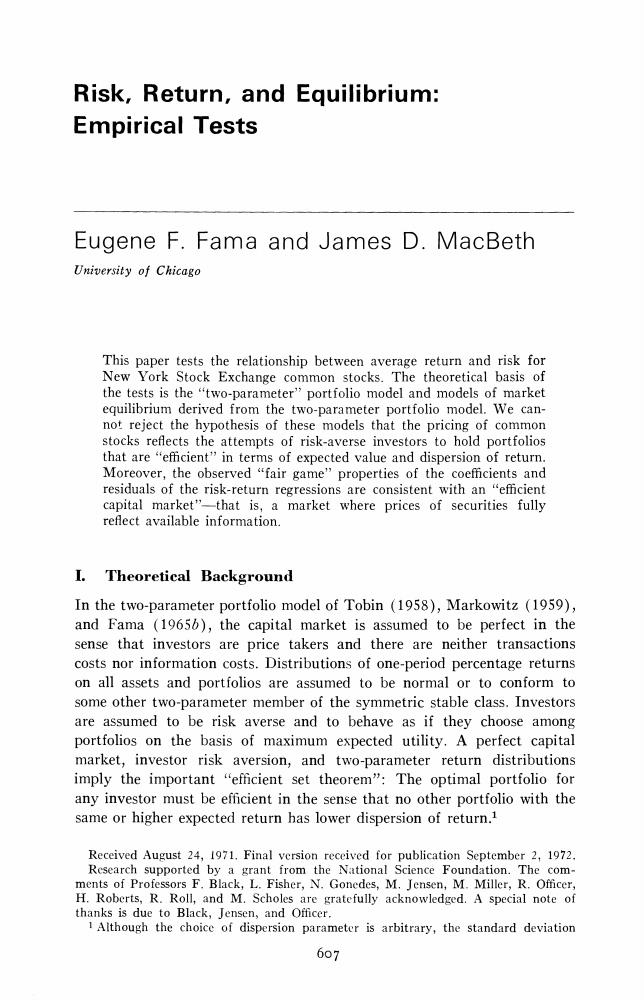正在加载图片...

Risk,Return,and Equilibrium: Empirical Tests Eugene F.Fama and James D.MacBeth University of Chicago This paper tests the relationship between average return and risk for New York Stock Exchange common stocks.The theoretical basis of the tests is the "two-parameter"'portfolio model and models of market equilibrium derived from the two-parameter portfolio model.We can- not reject the hypothesis of these models that the pricing of common stocks reflects the attempts of risk-averse investors to hold portfolios that are "efficient"in terms of expected value and dispersion of return. Moreover,the observed "fair game"properties of the coefficients and residuals of the risk-return regressions are consistent with an "efficient capital market"-that is,a market where prices of securities fully reflect available information. I.Theoretical Background In the two-parameter portfolio model of Tobin (1958),Markowitz (1959), and Fama (19656),the capital market is assumed to be perfect in the sense that investors are price takers and there are neither transactions costs nor information costs.Distributions of one-period percentage returns on all assets and portfolios are assumed to be normal or to conform to some other two-parameter member of the symmetric stable class.Investors are assumed to be risk averse and to behave as if they choose among portfolios on the basis of maximum expected utility.A perfect capital market,investor risk aversion,and two-parameter return distributions imply the important "efficient set theorem":The optimal portfolio for any investor must be efficient in the sense that no other portfolio with the same or higher expected return has lower dispersion of return.1 Received August 24,1971.Final version received for publication September 2,1972. Research supported by a grant from the National Science Foundation.The com- ments of Professors F.Black,L.Fisher,N.Gonedes,M.Jensen,M.Miller,R.Officer, H.Roberts,R.Roll,and M.Scholes are gratefully acknowledged.A special note of thanks is due to Black,Jensen,and Officer. I Although the choice of dispersion parameter is arbitrary,the standard deviation 607